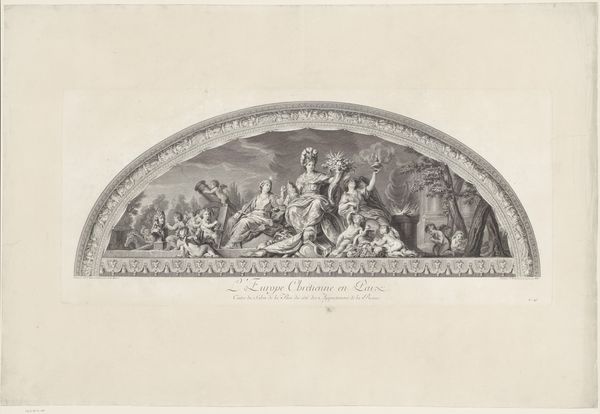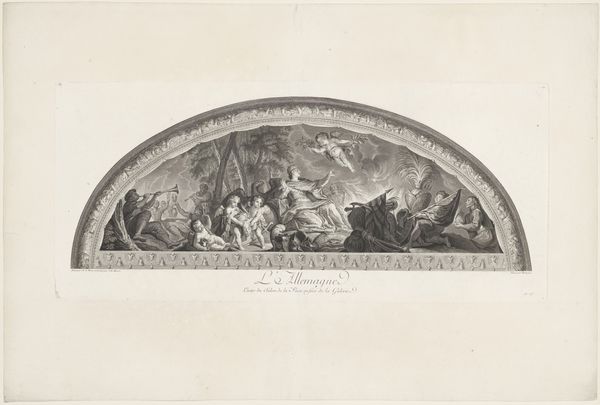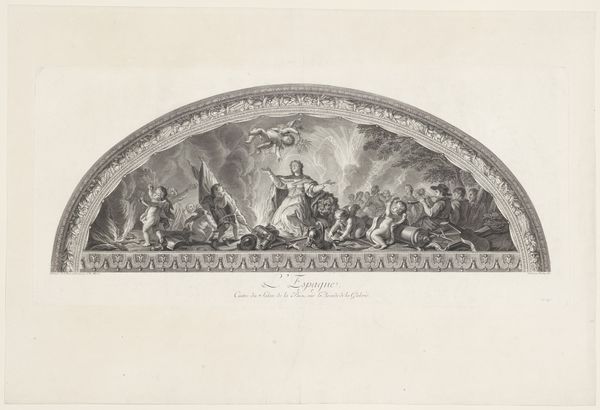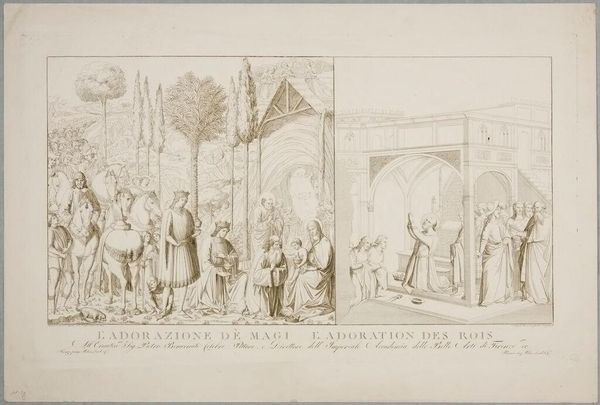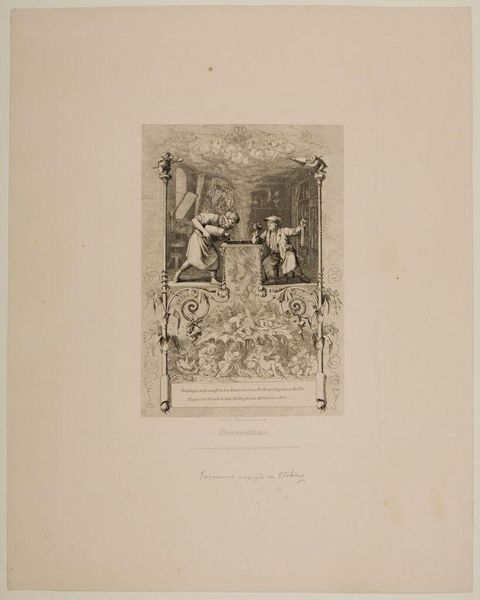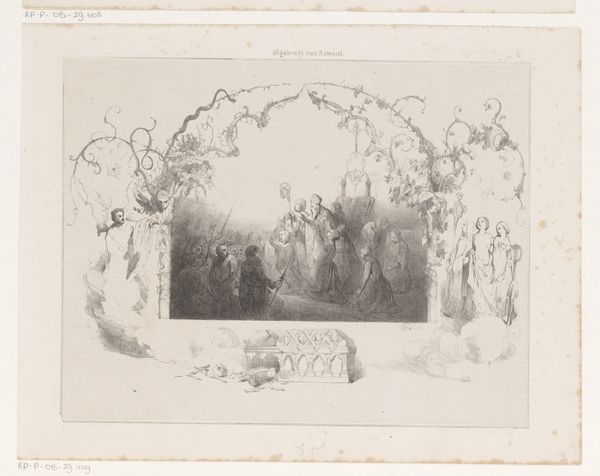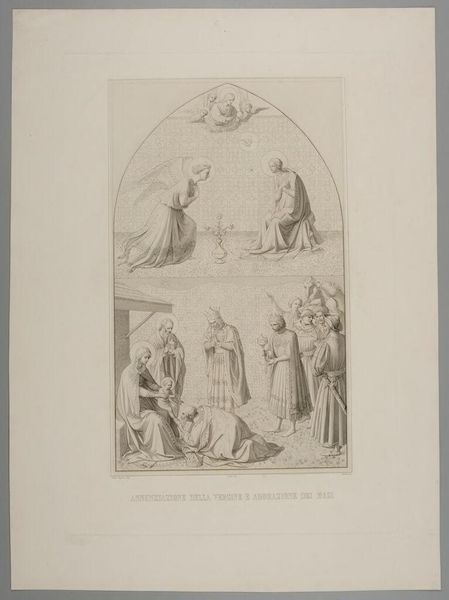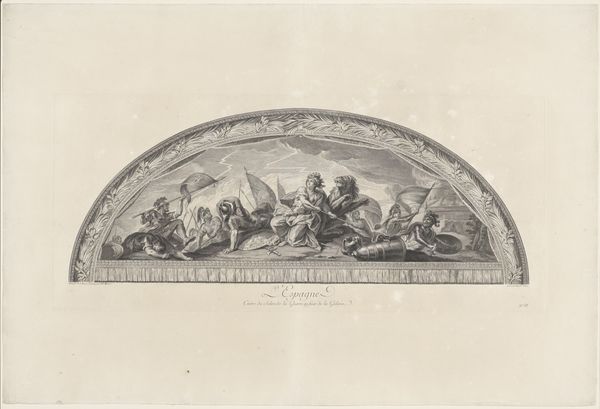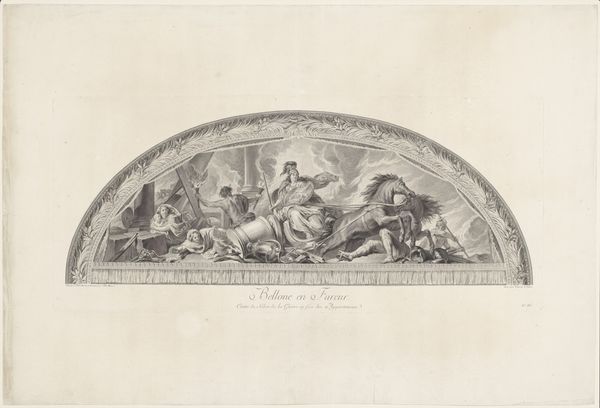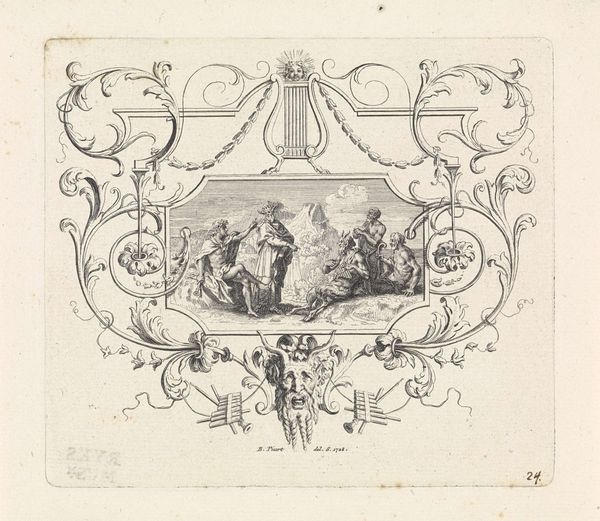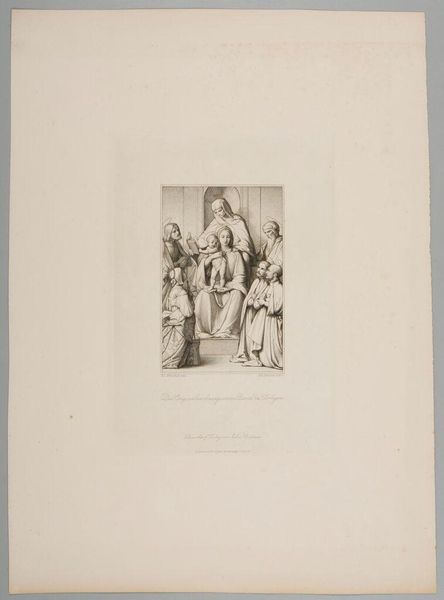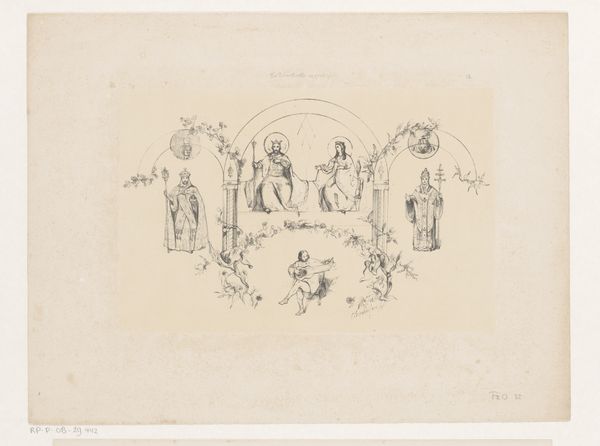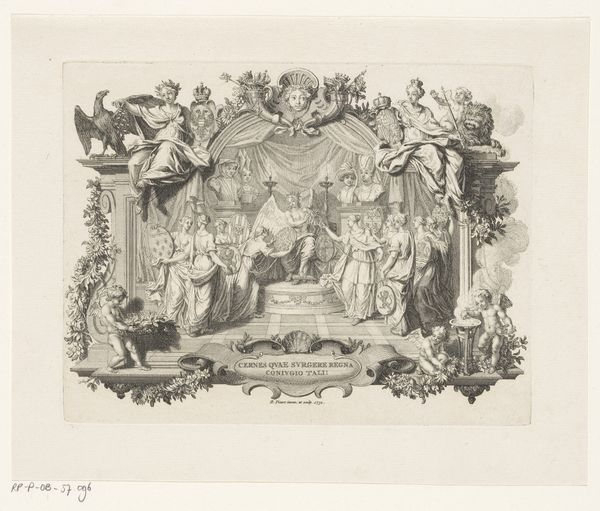
Sophronia and Olindo on the Funeral Pile c. 19th century
Copyright: CC0 1.0
Curator: This is Ferdinand Anton Krüger's "Sophronia and Olindo on the Funeral Pile." Editor: Wow, it’s stark. Almost feels like a stage set for a very grim play. All those precise lines—it’s incredibly detailed, but also quite…cold? Curator: It depicts a pivotal moment from Tasso's "Jerusalem Delivered," exploring themes of sacrifice and religious persecution. The bareness underscores the severity of the situation, really highlighting the power dynamics at play. Editor: You know, seeing it framed like this, under that arch, it's like we’re peering into a memory, a painful one at that. I wonder, were they truly brave or just resigned? Curator: That tension is crucial! Krüger invites us to consider agency within systems of oppression. Sophronia and Olindo’s actions can be interpreted as resistance, challenging patriarchal and religious norms. Editor: I guess what I see is not just a historical tableau, but a reflection on choices—difficult, messy, human choices made in impossible situations. Curator: Precisely. It holds a mirror to our present, prompting reflection on similar dynamics of power and resistance today. Editor: It's heavier now, in my mind. Sobering.
Comments
No comments
Be the first to comment and join the conversation on the ultimate creative platform.
